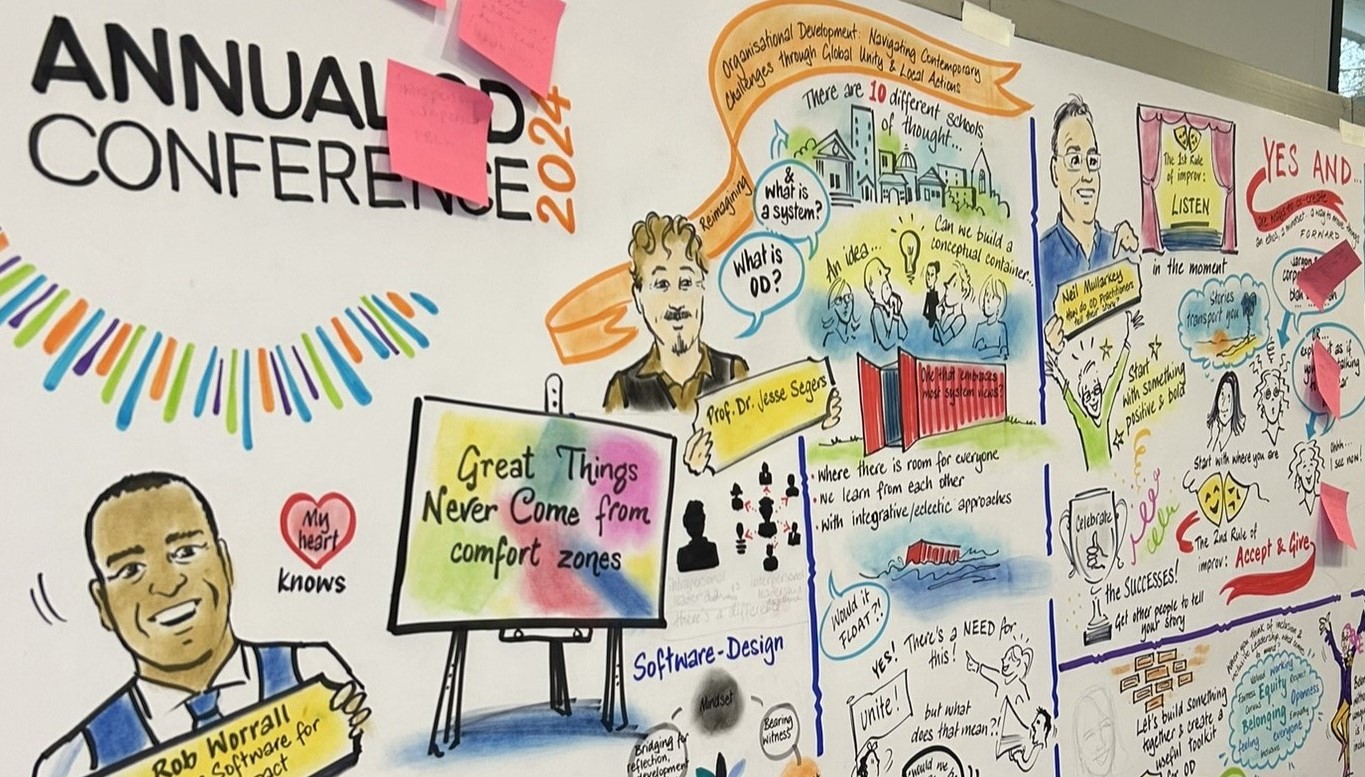A guest blog by Corporate Rebels
Self-management, self-organization, self-governing. These terms seem to become more and more trendy by the day. Not only in the organizational design world, but also increasingly in the mainstream media. This shouldn’t be surprising. Because who doesn’t want to work in a workplace where employees can decide everything by themselves? Or maybe even better, who doesn’t want a workplace without managers and bosses who tell you what to do?
And fair enough, when introduced successfully, self-management practices can be highly successful. They hold the power to turn traditional organizations upside down and they can transform the slow moving hierarchical pyramids to fast, adaptive and agile networks of teams. The results can be breathtaking: from increased levels of employee engagement to significantly better bottom lines. But is it actually all that good?
“We are aware that the terms self-management, self-organization and self-governing all have a slightly different definition. But, we are also convinced that these terms can be used interchangeably. We don’t want to end up in a dispute about definitions and want to focus our attention on the real issue. Therefore, hereafter we will refer solely to the term self-management.”
What are the common misunderstandings?
Sadly, we encounter many myths and fairy-tales around self-management practices. Ranging from incomplete information to completely false stories about such ‘utopian’ sounding workplaces. Especially people that are new or poorly introduced to the phenomenon seem to get fundamental things wrong about self-management. In this blog post, we’ll touch upon some of the most persistent ones.
Self management is the magical solution to every problem
We witness traditional organizations introducing self-management as the ultimate silver bullet. Some of the more traditional leaders have witnessed the success of others and believe that this rather exotic phenomenon might be the simple and seemingly magical solution to their own complicated (financial) problems.
But employees are not easily fooled. They can smell the wrong reasoning a mile away. So please forget about introducing self-management if you don’t really believe in it, or if the majority of the workforce doesn’t support the change. It will never work.
Self-management removes all hierarchy
Some assume that the introduction of self-management practices automatically remove the hierarchy from the organization. Some believe that suddenly everyone holds equal power within some kind of communistic utopia. Both assumptions are wrong.
The artificial, rigid and mostly unhealthy hierarchy based on the relative position of someone in the traditional pyramid is (when done well) replaced by a more natural, informal, dynamic and healthy hierarchy based on the expertise, talents and leadership skills of a person. However, achieving this is not as simple as removing all management layers and shouting that the organization is fully self-managing.
Self-management will turn into anarchy
Practicing self-management doesn’t necessarily turn an organization into total anarchy without rules, guidelines or best practices. Just like the more traditional organizational models do, self-management also requires certain rules, guidelines and best practices to run smoothly.
We often encounter, for example, organizations introducing a clear set of guidelines on how people treat each other, and best practices on how to distribute authority, how to make decisions, how to recruit and onboard new members, how to handle conflicts and how to set salaries.
Self-management is easy
It should be clear by now that self-management practices are not about all employees holding equal power. It’s about distributing the power more naturally, in order for all employees to make the best decisions for themselves, for the team and for the organization.
It may all sound ideal, but employees experiencing self-management for the first time often tell us that this alternative way of working is definitely not easy. It requires high levels of responsibility and accountability from everyone in the organization. We would even argue that working with self-management practices is way more difficult than working in a traditional pyramid.
Everybody loves working in a self-managed organization
Holding high levels of responsibility and accountability is not something everybody wants. A small (smaller than some might think!) part of the workforce prefers to transfer difficult decision making to others. Others are just too comfortable hiding themselves somewhere in the labyrinthine depths of bureaucracy.
Another part of the workforce doesn’t want to give up their formal position of power or can’t unlearn their command-and-control mindset. Obviously, this creates frictions and problems within self-management structures. It often results in (traditional) people getting frustrated and ending up leaving the organization.
It’s a reality and it’s scale-able
There are some major misunderstandings about self-management practices. We believe it is important to share some of these misunderstandings as to contribute to those who are interested to actually implement such practices and structures.
And while the topic is popular, it certainly isn’t new. These practices should not be seen as novel, neither as experimental. Various organizations around the globe show us everyday the reality and potential success of this alternative way of working.
W.L. Gore (an American multinational manufacturing company famous for it’s brand called Gore-Tex and one of our Bucket List organizations) already works successfully with self-managing teams since it was founded in 1958.
Nor are only small organizations operating with self-managing teams. W.L. Gore already proved to the world that this alternative way of working is scale-able and also Buurtzorg (a Dutch health-care organization) is proving it once again by allowing 14.000 nurses to work in self-managing teams.
It’s a reality and it can be done, just make sure you are aware of some of the major misunderstandings.
Joost Minnaar, Pim de Morree, Freek Ronner and Catelijne Bexkens, are The Corporate Rebels, a consultancy firm, on a mission to make work more fun. They that set out to find and learn from the world’s most progressive organisations including well-known names such as Spotify, Google and Patagonia to lesser-known organisations that organise work in radically different ways. Self-management is a key feature of many of the organisations they have learned from, worked with and now support around the globe.





